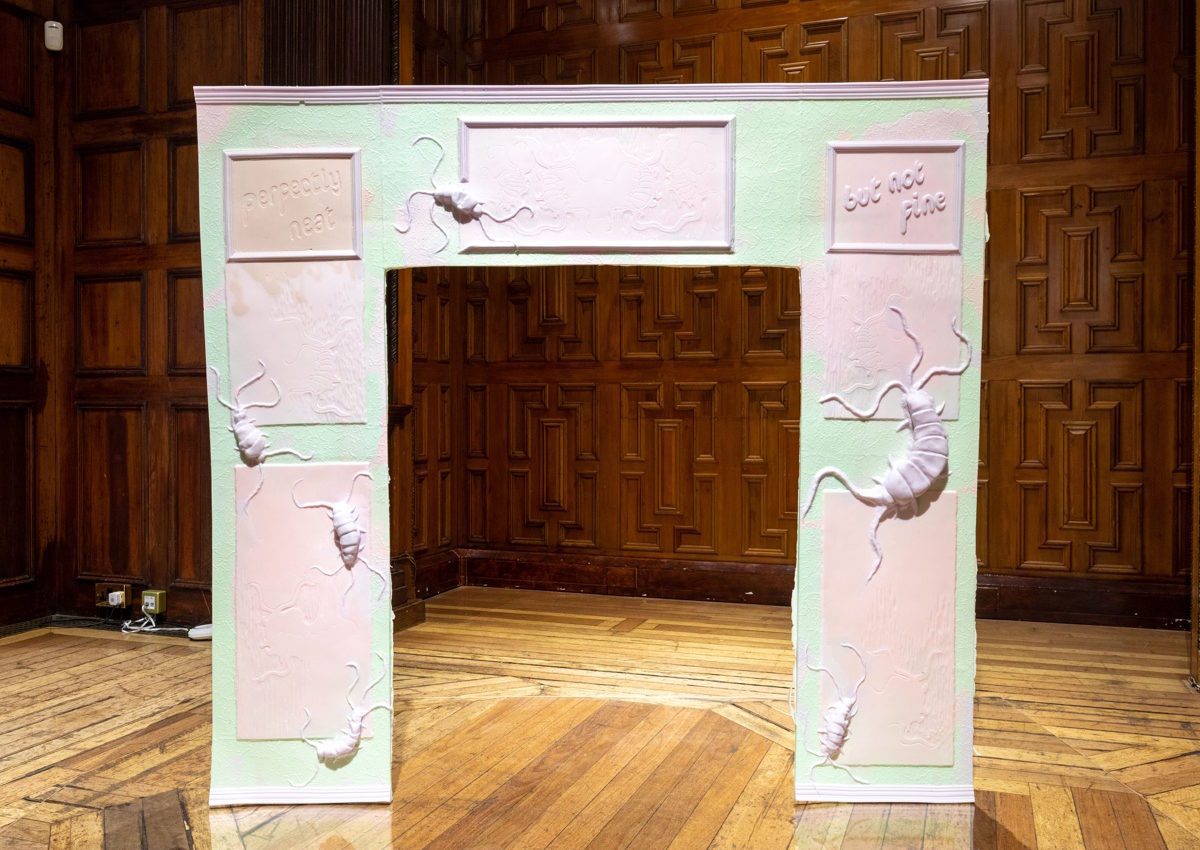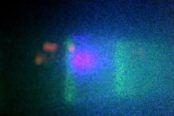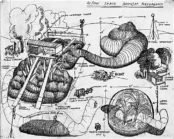The interrelationship between Art and Architecture has always been topical within the cultural discourse. Which discipline owns the primacy (if there is to be one)? How is one different from another? Where does the distinction between the two lie?
Or, remembering Frank Lloyd Wright’s famous quote, “the mother art is architecture,” could it be that the two disciplines are part of the same body? If so, is the ubiquitous Capital unifying them into a mass of exploitative entities? Or could it be a greater phenomenological presence that transcends the two disciplines into Intercorporeality – a unity free from subdivisions, where dichotomies envelop and cherish each other? Inside, the latest exhibition curated by Thorp Stavri in partnership with Two Temple Place meditates on these eternal questions offering an unconventional view that Art and Architecture are indeed part of the same body, which (almost) escapes the consuming grip of the Capital.

At first, Inside might have seemed inclined to discuss the primacy of Architecture over Art because the production process was led by and responding to the architectural features of Two Temple Place. The exhibition was an outcome of a 5-day residency programme at Two Temple Place held back in the summer of 2022. As part of this residency, 11 emerging artists attended workshops and talks on the history of the building, its architectural peculiarities, and crafts embedded into the architectural body. Following a few months of studio work, the artists showcased site-specific artworks manifesting their perceptions of the building. Thus, the Art displayed in Inside was born from the Architecture of Two Temple Place. Nevertheless, on a more in-depth level, the production process of the exhibition was an elegant reverence to the development of Two Temple Place itself, where Architecture has the anteriority over Art from both materialistic and conceptual capacities. A neo-Gothic gem commissioned by William Waldorf Astor in 1895, the building celebrated Astor’s character. As a precursor of the Capital, Architecture constructed the tangible flesh and bones of the building – structure and shape, sequences and functions of spaces – exploitative entities valuable for the market. However, from a phenomenological perspective, tangible architectural forms became an abode for precious artworks of remarkable craftspeople, highlighting Astor’s diverse interests and unlimited funds. This intertwining of Architecture and Art assembled within it transgressed Two Temple Place into one body – a large-scale cabinet of curiosities striking with extraordinary pieces whilst flattering Astor’s wealth.
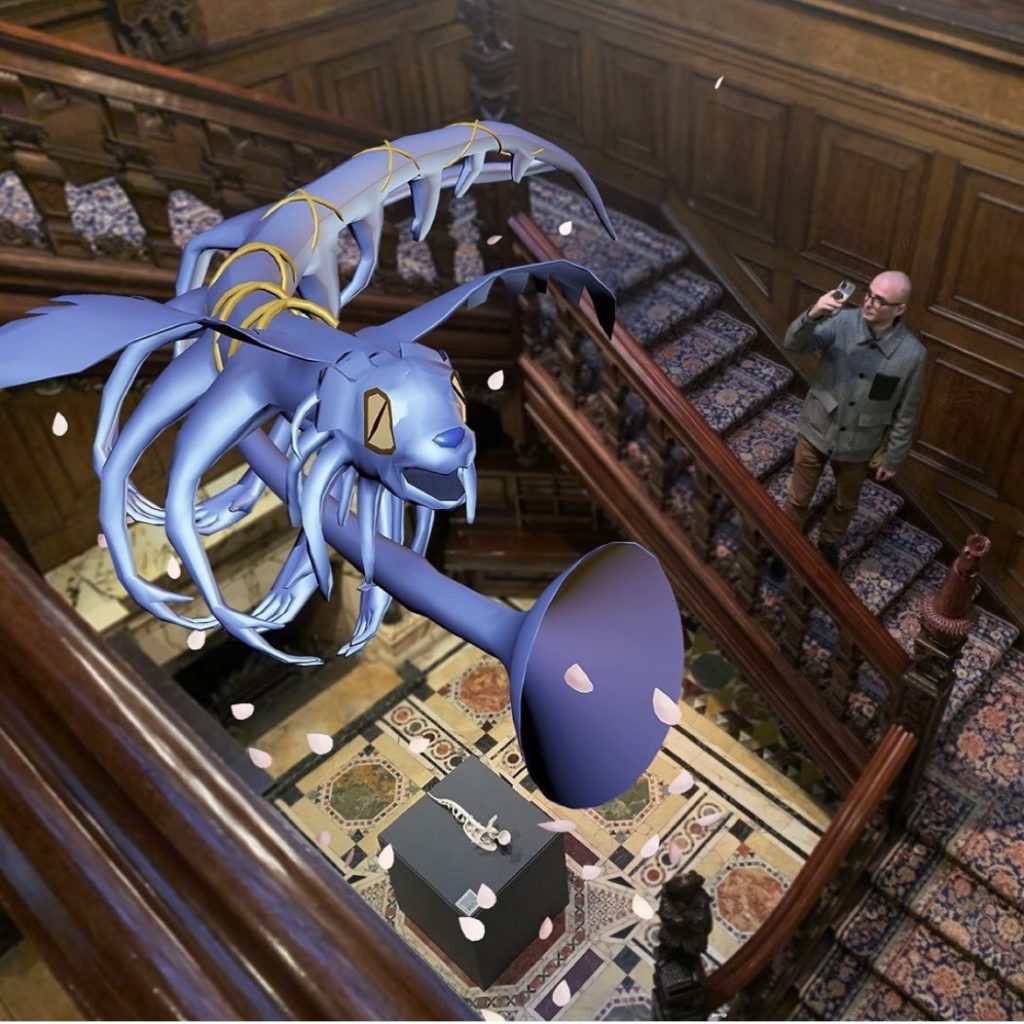
Often, contemporary art exhibitions engaging with the matters of celebrating wealth as the most significant achievement can feel like kitsch arising from the general programme of anti-capitalist liberation of the Art World, which means that there can be little or no consideration of the contribution of people involved – only ubiquitous critique of the Capital. Indeed, Astor exhibited his personal and business success through his building. However, on the bright side, the craft workers had an opportunity to bring their exquisite skills and expertise to life, leaving us with valuable resources for inspiration and learning. Pleasurably, Inside offered a broad spectrum of perceptions on what the positive supplements of wealth offer, nonetheless retaining the necessary critique of the Capital with a sophisticated touch of bitterness.
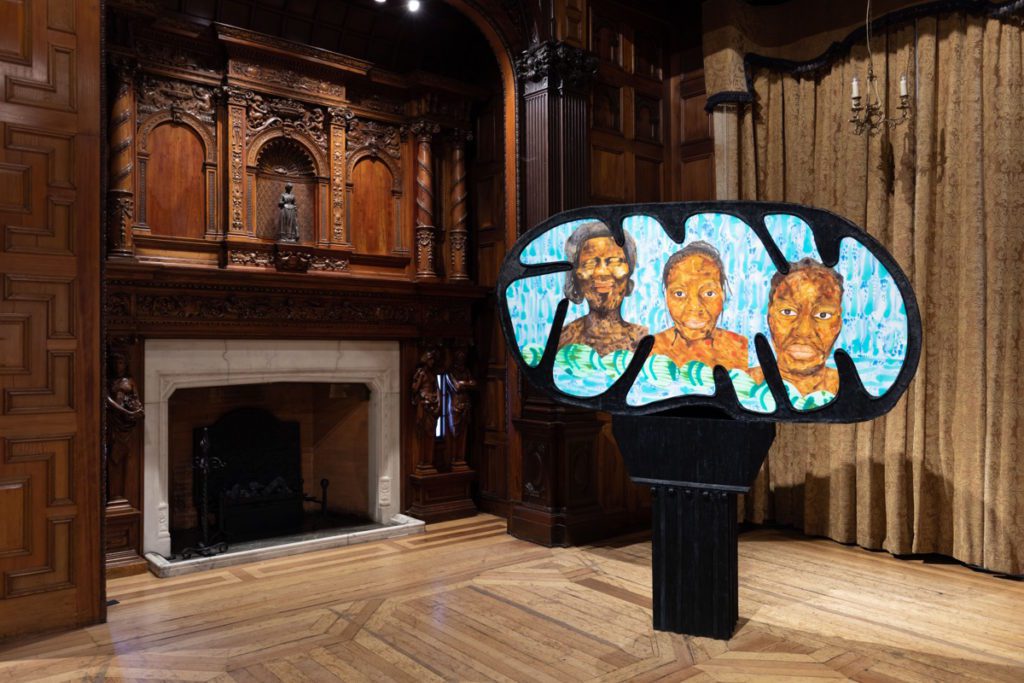
With this in mind, Yambe Tam’s Herald, abiding by the main staircase & the gallery, was a personal highlight. Herald was an augmented reality chimera transgressing from its physical body sculpted from biopolymer and floating within the ornate structures of the hall. Their bodily shape combined various creatures, which were part of the representation of the building and the owner. Referring to the bomb damage, renovations, and repairs the building had undergone throughout its life, Tam imagined Two Temple Place as a “chimera of different periods and decorative styles.” Arguably, Herald also resembled Nathaniel Hitches’ fantastic creatures carved on the external elevations of the building, which transgressed through times. Notably, the combination of mediums – sculptural piece and AR – perfectly corresponds to the numerous signs of fascination with technology carried within the building, such as William Frith’s cupids or the intricately masked safes. Merging the building’s legacy with Tam’s artistic practice, Herald is an opening towards a realm where Art and Architecture merge into Intercorporeality. A domain where time frames are blurred, unity between craft and artistic mediums is achieved, and the tangible transcends towards invisible and invisible traces into the tangible.
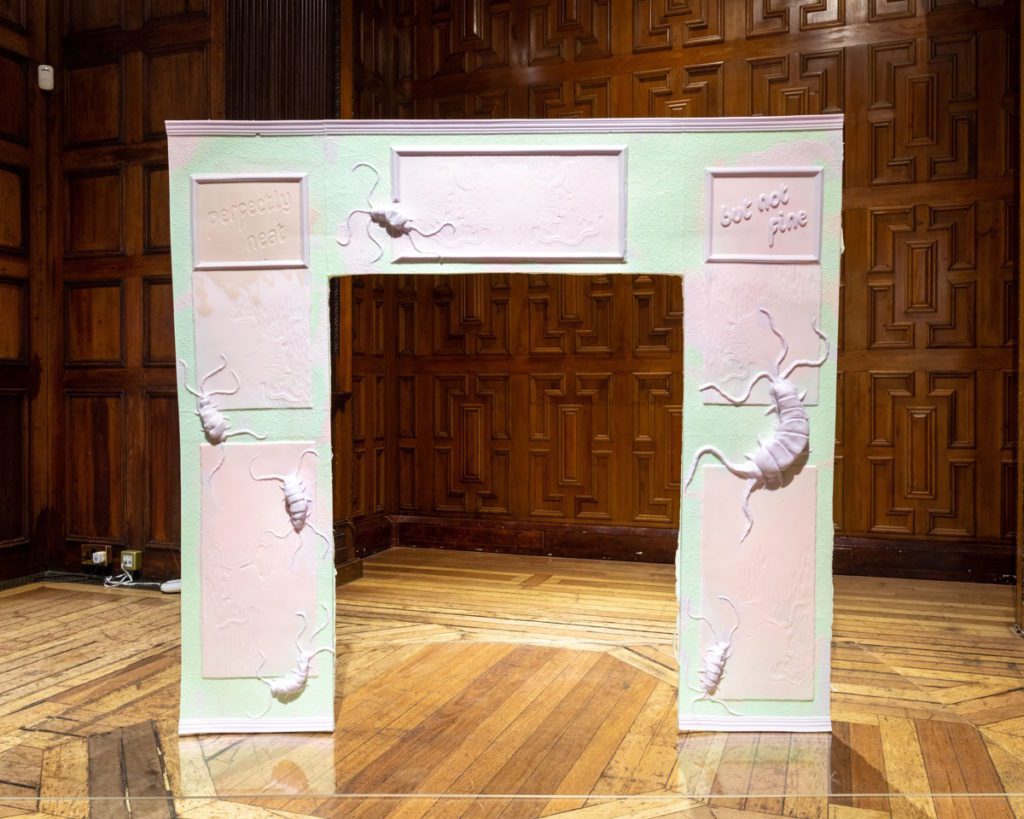
John Costi’s series Temple Babies: Mark 2 (Mean Fiddler Edition) offered a positively contrasting interpretation of the same space and decorative elements of the building. Playing with the changeability of the space – Thomas Nicholls’ wooden sculptures at the newel posts used to be substituted with bronze versions during the socials to prevent potential damages – Costi replaced two of The Three Musketeers characters with sculptural cakes composed from found and repurposed objects. The intervention continued in the library with the compositions assembled in the books cabinets, reverencing the cabinets of curiosities from the days of old. By introducing “far-fetched and comedic findings,” Costi brought a sophisticated, bitter-sweet mock to the overall intention of the building to celebrate wealth through mesmerising yet “ostentatious” interiors.
Contemplation on the challenges the building had faced throughout its history was extended in Chloe Louise Lawrence’s Perfectly neat, but not fine. Reminiscing on growing up in a precast puzzle of social housing blocks of flats demolished in 2020, Lawrence sculpted a replica of the mantelpiece from her childhood home as a curtsey to the Great Hall fireplace forever lost in the WW2 bombing. The artwork was cast from soap scented with cedarwood to amplify the smell of the existing panelling. Perfectly neat, but not fine had been gradually dissolving as the soap had been seeping Glycerine Dew. A sentimental Touch, Lawrence’s piece reflected on what is forever gone in the finite real but is never lost in the inexhaustible Intercorporeality. Within this infinity, the individual experience transcends into the we-world – a phenomenological spatiality where every thing and body is a living entity that may dissolve within the matter.
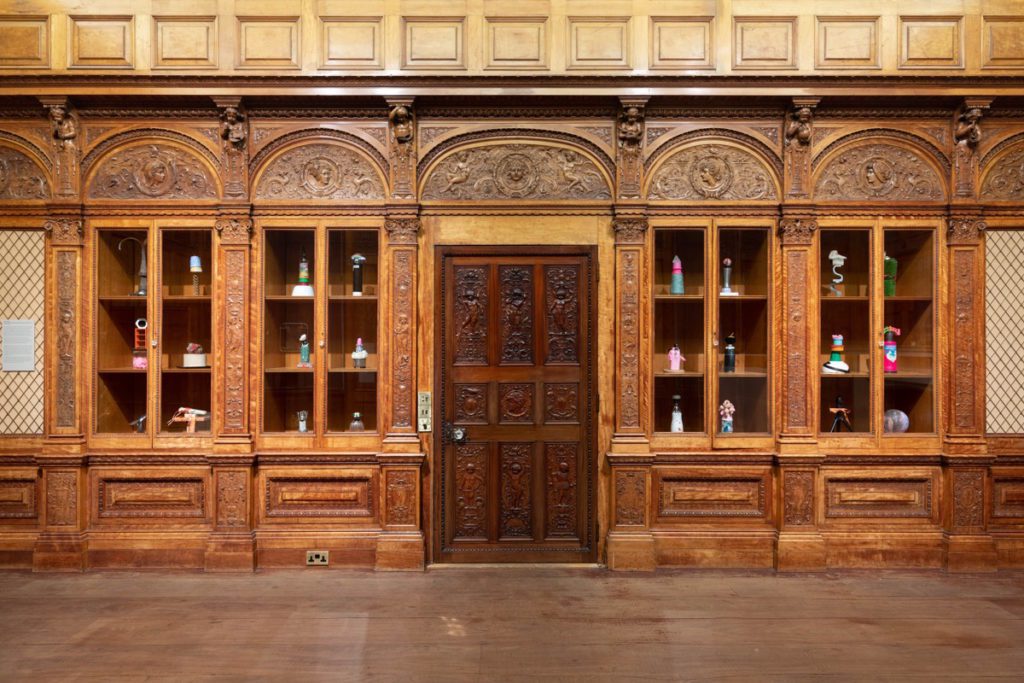
The theme of the we-world was further elaborated in Yui Yamamoto’s durational performative piece Thousand Scrapes Thousand Responces. Throughout the exhibition, the visitors were invited to write down an answer to the question, ‘what did you have to do to be accepted?’ The visitors left their responses on delicate washi paper and left them in a box next to Yamamoto’s wall of wires. During the performances, Yamamoto silently cut barbs of the wire and replaced them with soft paper with the visitors’ responses. This piece triggered a wide range of sensations – uncanny from the wall materiality and the dark insides of the visitors’ experiences, curiosity about the performative process and narratives of the others, appreciation of the artist’s courage to face the risk of wire cuts and visitors’ bravery to share sacred narratives; admiration for visitors’ ability to see brightness while being challenged by darkness. Like the Two Temple Place building is an archive of various narratives – the Astor’s family history, the contribution of the craft workers who put their souls into the mesmerising details, literary and historical characters depicted on the numerous panels and sculptures – Thousand Scrapes Thousand Responces was a collection of stories of people who came to see Inside. A connector between the building and its visitors, Yamamoto’s work was a hopeful promise of the Intercorporeal we-world where the once exclusive realm can become an inspiring, inclusive point for sharing deeply personal experiences without being objectified or judged.
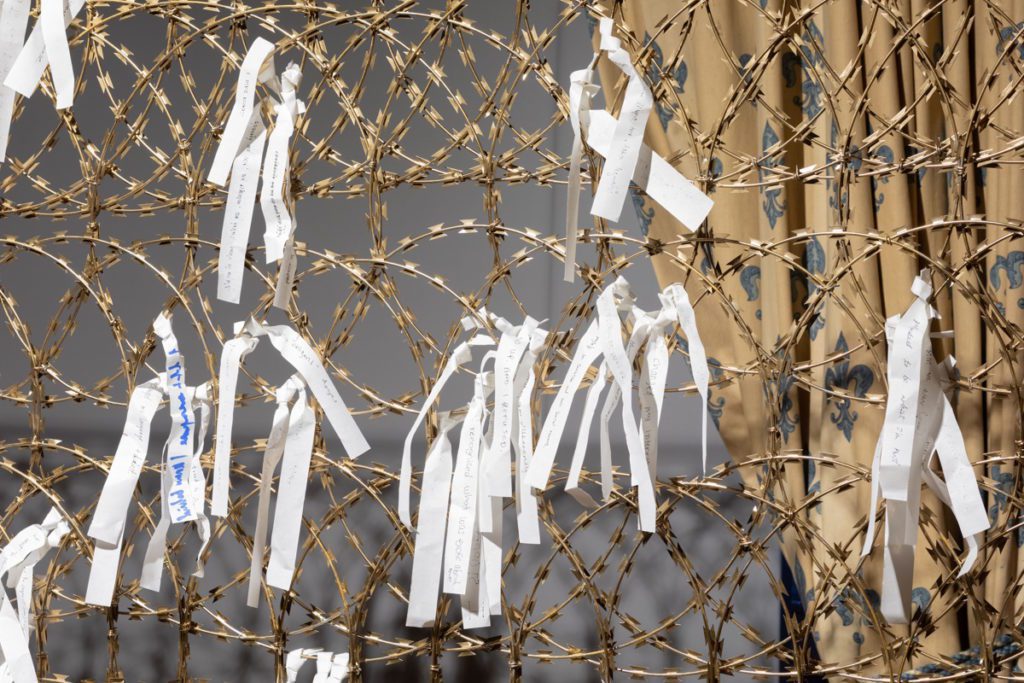
To reiterate, while at first glance, Inside might have seemed to discuss the interrelation between Architecture and Art as a hierarchical relationship where the former leads the latter, in its depth, meticulous curation of the exhibition extended the discourse to a broader span of concerns. One of them was the interpretation of wealth legacy – rather than being consumed by a perception of wealth as Capital’s evil; the show suggested that its manifestations can be used as sources for inspiration and learning. Likewise, Inside contemplated the greater Phenomenological matters of Intercorporeality, a realm within and simultaneously beyond the tangible, where time frames are blurred, significations and subdivisions are abolished, and unity between bodies is achieved. Within this context, the exhibition discussed the fundamental role of materiality as a departing point towards the we-world – a realm free from exclusivity and judgement, embracing thoughts, experiences, and sentiments. Initially aiming to respond to the design peculiarities and history of Two Temple Place through the site-specific artworks, Inside achieved a more comprehensive task and transgressed this rarely accessible masterpiece of Architecture and Craftwork towards becoming an Intercorporeal domain radiating inspiration, acceptance, and promise for the we-world. Is this not the most striking impact that Art can have on us all?
Inside
Two Temple Place
London WC2R 3BD
28th January – 26th February 2023
All images courtesy and © of the respective artists
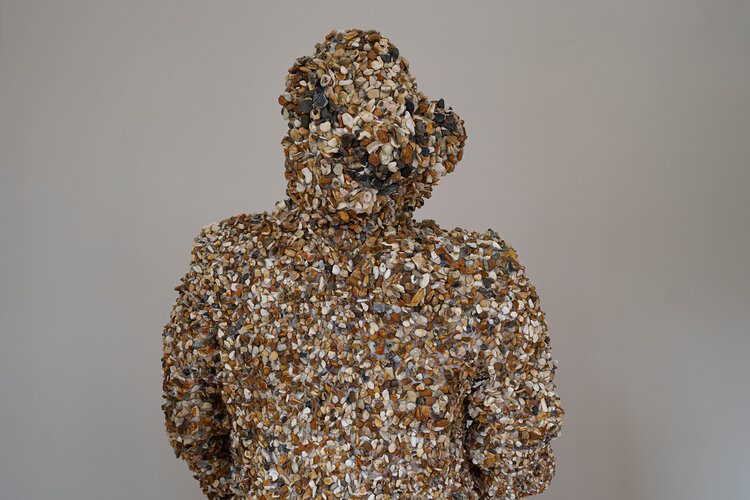
Olga Tarasova explores the interconnection between spatial and artistic practices and perception in relation to phenomenology. Her work focuses on the capability of spaces to contain elements that are unavailable for human perception and cannot be grasped. These elements manifest themselves in the experiences that affect the subject.

